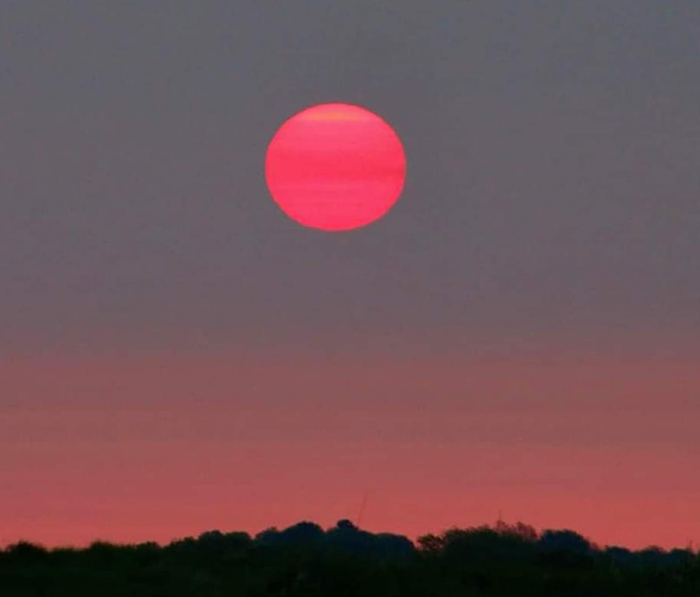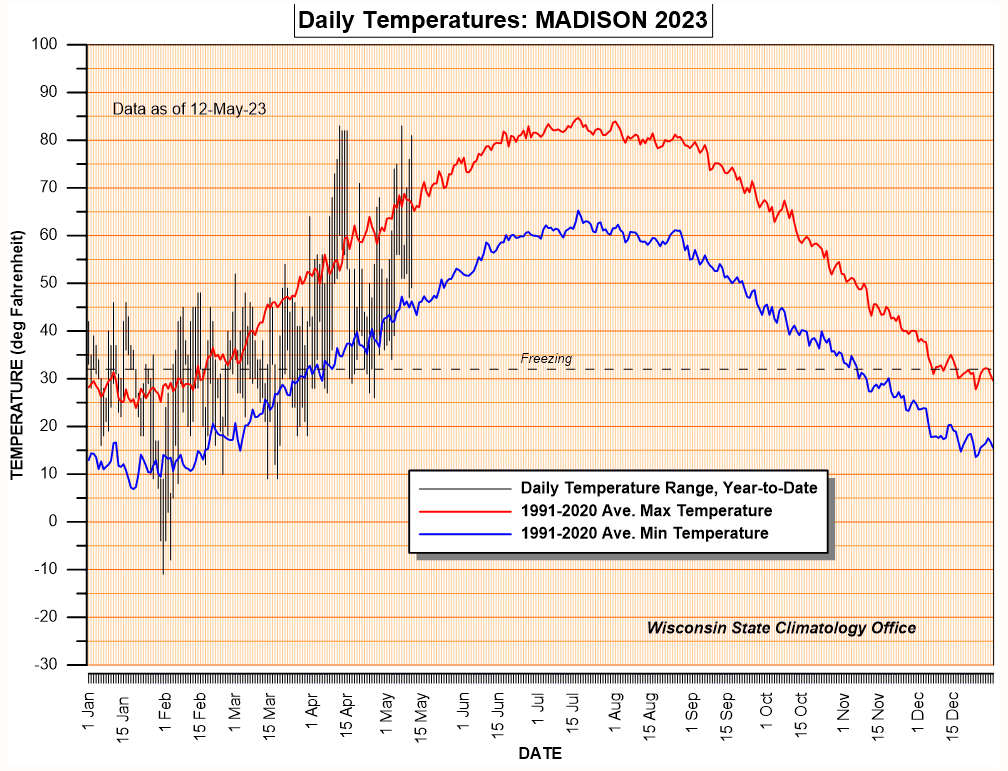Light is a form of electromagnetic energy that does not need matter to propagate. We can characterize this energy by its wavelength, which is the distance along a wave from one crest to another. Our eyes are sensitive to light with wavelengths between approximately 0.4 to 0.7 microns. Blue colors have shorter wavelengths, while red colors have longer ones.
When light interacts with particles suspended in air, it can be scattered or absorbed. Energy that is scattered causes a change in direction of the light path. The amount of light that is being scattered is a function of the size of the particle relative to the wavelength of the light falling on the particle. While all colors are scattered by air molecules, violet and blue are scattered most. The sky looks blue, not violet, because our eyes are more sensitive to blue light.
This past week, upper-level winds carried smoke from fires in western Canada over the Midwest. Smoke can cause the sky to appear hazy, even if the smoke is high above the ground. When smoke is thick, it can cause brilliant red sunsets and sunrises. Small smoke particles scatter blue light. So, as the sun sets or rises and its rays pass through the smoke plume, all the blue lights are scattered out of the path between the setting sun and your eyes, leaving only the red and orange colors. This results in the sun having a bright red color.
If the winds are right, the smoke can be transported down to the ground. This can cause a reduction in air quality. The small particles that make up the smoke can cause respiratory problems, particularly for children, the elderly, and people with asthma.
Steve Ackerman and Jonathan Martin, professors in the UW-Madison department of atmospheric and oceanic sciences, are guests on WHA radio (970 AM) at 11:45 a.m. the last Monday of each month. Send them your questions at stevea@ssec.wisc.edu or jemarti1@wisc.edu.






